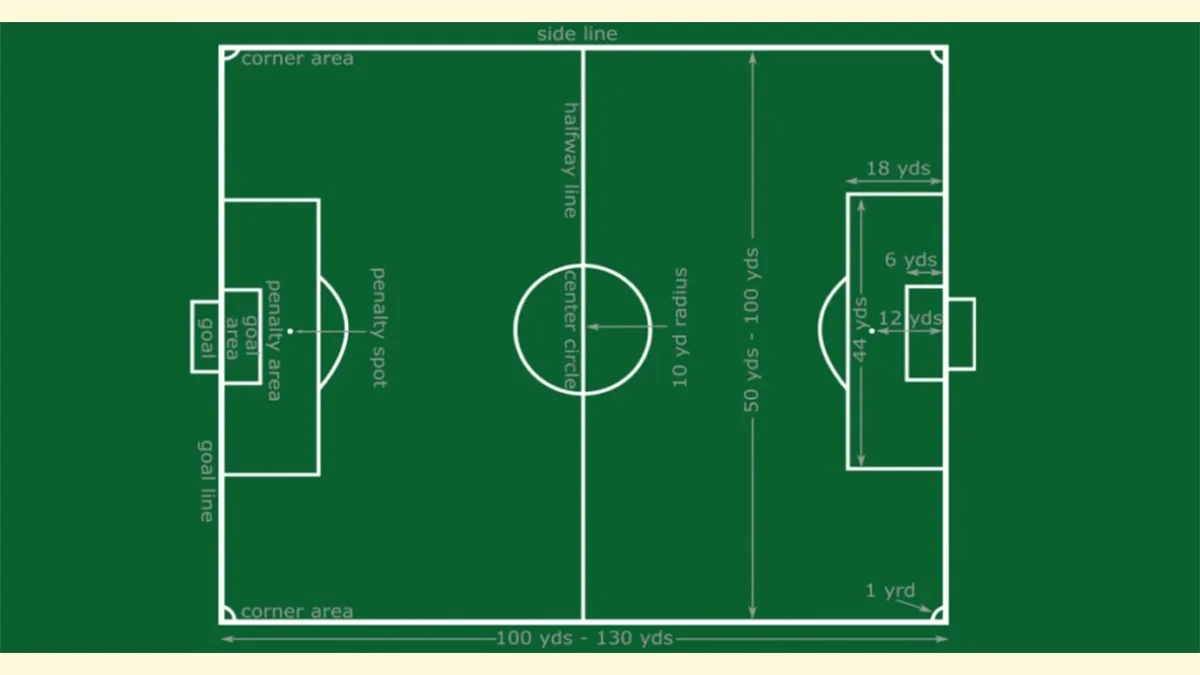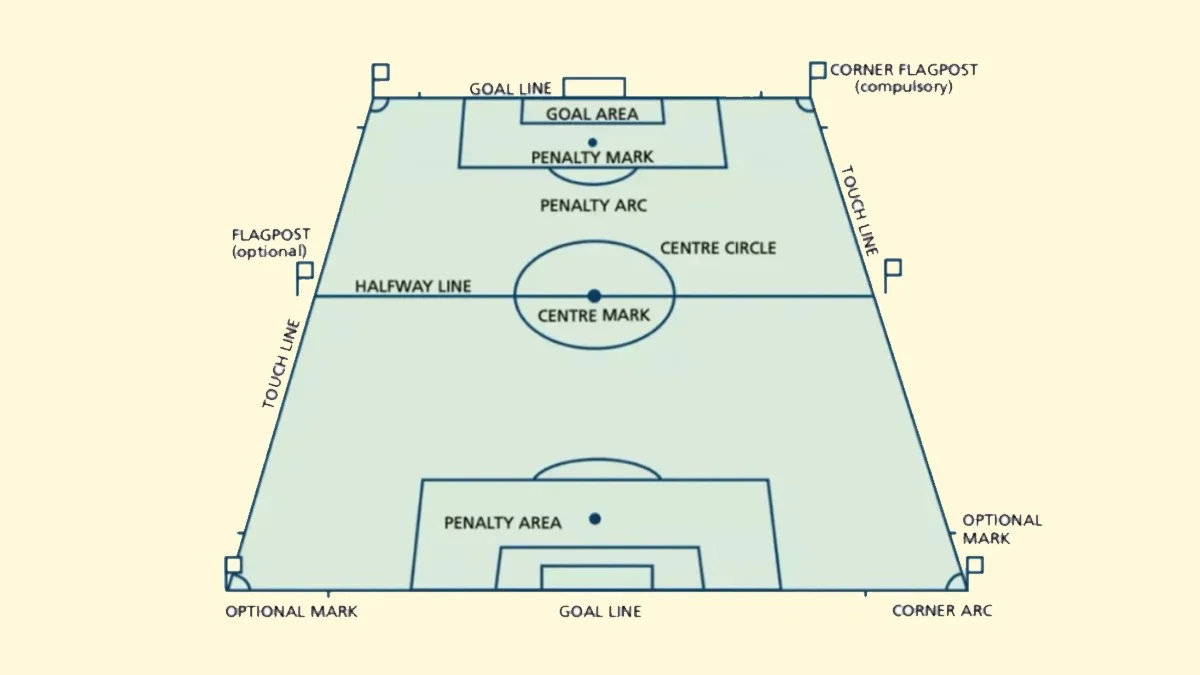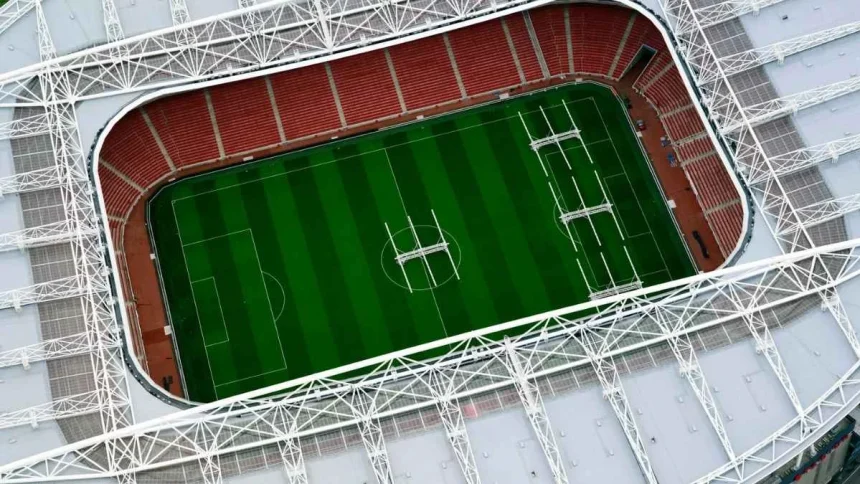Have you ever wondered why some football matches appear faster and more open, while others seem tight and defensive? The solution frequently lies in the length of the pitch. Football field dimensions might appear the same, but small variations in duration and width can absolutely alter how the sport is performed.
In this article, we’ll explore the precise measurements of soccer fields, the reasons for their variations, and how pitch length can impact approaches, player performance, and even tournament regulations.
Standard Dimensions of a Football Field
A football pitch is always large, but its size isn’t fixed worldwide. According to the International Football Association Board (IFAB), the body that writes football’s rules, the length should be 100-130 yards and the width 50-100 yards.
This flexibility allows clubs and stadiums to adapt their fields based on available space or tactical preferences.
Football Field Dimensions for Domestic Competitions
For local leagues and smaller competitions, pitch dimensions usually fall within these ranges:
- Length: 100-130 yards
- Width: 50-100 yards
This wide allowance makes it easier for community clubs, schools, and smaller stadiums to host matches without being restricted to one exact size.
Football Field Dimensions for International Matches

When it comes to international football, FIFA applies stricter standards:
- Length: 110-120 yards
- Width: 70-80 yards
These tighter limits make sure all teams play under the same conditions, especially in tournaments like the FIFA World Cup or UEFA European Championship.
Comparison: Domestic vs International Dimensions
Domestic leagues enjoy flexibility; however, worldwide tournaments demand uniformity. The distinction subjects because:
- Larger domestic pitches permit speedy, ownership-heavy soccer.
- Smaller domestic pitches choose defensive and pressing procedures.
- Worldwide games put off those benefits via standardising dimensions.
Major Areas of a Football Pitch
A football field isn’t just about grass and goals. It includes key sections that define how the game is played:
- Center Circle: used for kick-offs.
- Penalty Area (18-yard box): where fouls lead to penalties.
- Goal Area: where goalkeepers operate during goal kicks.
- Corner Arcs: marked spots for corner kicks.
Each of these has precise measurements that directly affect gameplay.
Touchlines and Goal Lines
The longest boundaries of the field are called touchlines, while the shorter ones are goal lines.
- A ball is out of play only when it completely crosses these lines.
- Goals are valid only when the whole ball crosses the goal line between the posts.
Penalty Area (18-Yard Box)
The penalty box, also called the 18-yard box, measures 44 yards wide and 18 yards deep. This area is crucial because:
- Fouls inside it result in a penalty kick.
- Goalkeepers can handle the ball only within this box.
Goal Area
Additionally referred to as the six-yard box, whichis a smaller rectangle, wherein goalkeepers take goal kicks. It measures 6 yards from the goal line into the sphere and 20 yards wide.
It could look small, but it performs a large role in set pieces and protecting corners.
Center Circle and Kick-Off Spot
In the middle of the sector lies the middle circle, with a ten-yard radius. It ensures defenders stay back throughout kick-off.
The kick-off spot at its centre marks where play begins or restarts after a dream.
Why Do Football Pitches Vary in Size?

Unlike sports like basketball or tennis, football allows variation within limits. This benefits clubs because:
- Stadiums can fit pitches based on available space.
- Teams can adjust pitch sizes to suit their tactics.
Case Studies: Famous Stadiums and Their Pitch Sizes
- Camp Nou (Barcelona): Known for a large pitch, encouraging wide, attacking football.
- Anfield (Liverpool): Smaller pitch that suits high-intensity pressing.
- Wembley & Maracanã: Standard-sized pitches used for major finals.
Impact of Pitch Size on Playing Style
Massive Fields: more space for innovative play, long passes, and attacking strategies.
Small Fields: simpler to press warring parties and limit open play, favouring protecting teams.
That’s why pitch size isn’t just a measurement, it’s a tactical weapon.
Playing Surfaces: Natural Grass vs Artificial Turf
Two types of football pitches exist:
- Natural Grass: Preferred in top leagues like the Premier League and La Liga.
- Artificial Turf: Used in countries with extreme climates where grass is hard to maintain.
FIFA only allows artificial turf if it meets strict safety and performance standards.
Pitch Maintenance and Its Role in Games
Even small details like grass height and watering can influence how the ball moves. For example:
- Short grass speeds up passing.
- Longer grass slows down play and favors defensive styles.
How Stadiums Adjust Pitch Sizes
Leagues, just like the gold standard Leagues, allow golf equipment to choose sizes within limits. Managers sometimes use this to create a domestic advantage through tailoring dimensions to their crew’s style.
International Tournaments and Strict Guidelines
For tournaments like the FIFA World Cup, all pitches must follow exact dimensions. This ensures fairness and prevents teams from gaining an advantage through pitch size.
Also Read: BGMI Showdown Day 3: True Rippers Lead, Soul Jumps
FAQs
-
What is the minimum size of a football field?
100 yards long and 50 yards wide for domestic games.
-
What are the FIFA-approved dimensions for international matches?
Length: 110-120 yards, Width: 70-80 yards.
-
Why do clubs use different pitch sizes?
To suit their playing style and take advantage of home conditions.
-
Which famous stadium has the largest pitch?
Camp Nou is often cited for having one of the largest pitches in European football.
-
Does grass height really affect football games?
Yes, shorter grass makes the game faster, while longer grass slows down play.





















